Apollo 11 Moon landing: Everything you need to know
- Published
- comments
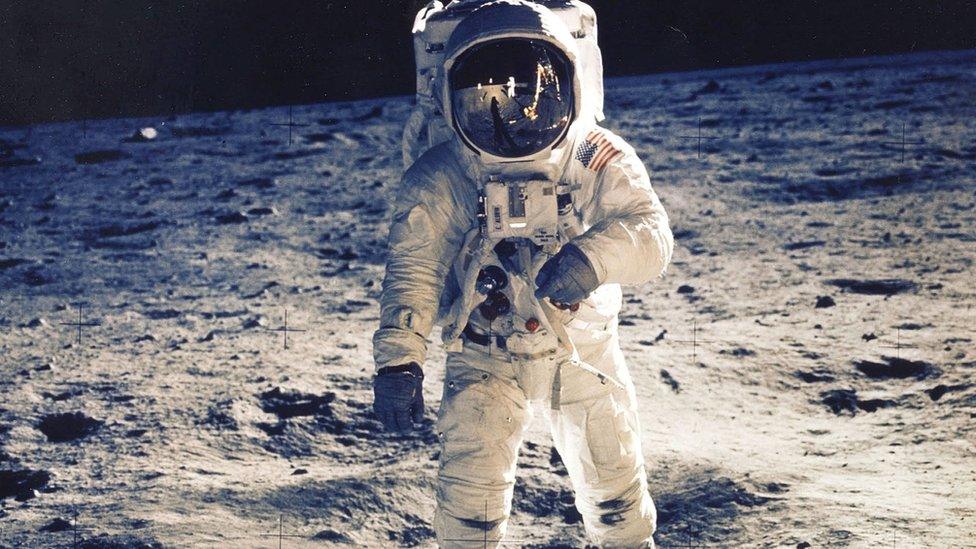
It's 55 years since US astronauts Buzz Aldrin and Neil Armstrong became the first people to walk on the Moon.
Neil Armstrong stepped onto the surface of the Moon on 20 July 1969. As he did so, he spoke the famous words: "That's one small step for man, one giant leap for mankind."
A camera was able to transmit the moment to around 650 million people who were watching the Apollo mission on television.
Armstrong was closely followed by fellow astronaut Buzz Aldrin, who described the Moon as "magnificent desolation".
They spent 21 hours on its surface, including a seven-hour sleep, before returning to Earth.
Find out more about the Apollo 11 mission below.
Why was the Apollo 11 Moon landing so important?
The simple reason is that it had never been done before - and it was a big ambition for countries, and their space programmes, to be the first to land a human on the Moon's surface.
In the run-up to the Moon landing, the US was competing with the Soviet Union in something called the space race. This was a competition to be the first to complete missions exploring the world outside the Earth's atmosphere.
This race started when the Soviets - the US's enemy during the Cold War - launched the first Soviet Sputnik satellite in 1957.
Then, Soviet cosmonaut Yuri Gagarin became the first human in space on 12 April 1961.
The Americans wanted technological superiority - and it looked like the Soviets were winning in the space race.
WATCH: What was the space race? (October 2017)
So, in 1962, US President John F Kennedy announced a big ambition, in a speech which is now very famous.
"We choose to go to the Moon!" he said.
US space agency Nasa invested lots of money (around $25 billion, which is around £20 billion) and effort into making this happen. The mission would come to be known as the Apollo programme and its goal was to land humans on the Moon and bring them safely back to Earth.
About 400,000 people worked on it.
About 400,000 people worked on the Apollo 11 mission
It cost Nasa around £25 billion (£20 billion)
The mission blasted off on 16 July 1969
It took four days, six hours and 45 minutes to get to the Moon
The lunar module landed on the Moon at 8:17pm on 20 July 1969
By the time the crew landed back on Earth, the mission had taken 8 days, 3 hours, 18 minutes and 35 seconds
A total of 12 people have walked on the Moon
The last people walked on the Moon in 1972
How did Apollo 11 astronauts get to the Moon?
The Moon is about 240,000 miles from Earth - so the Apollo mission was not going to be an easy task. It was also a dangerous mission.
The Apollo mission that would eventually land a man on the Moon - Apollo 11 - was not the first.
Apollo 8 and 10 entered lunar orbit but didn't achieve the program's goal, while during Apollo 1, the crew of three tragically died in a launch pad fire.
On the morning of 16 July 1969, astronauts Buzz Aldrin, Neil Armstrong and Michael Collins blasted off aboard a Saturn 5 rocket, which propelled them out of Earth's gravity.
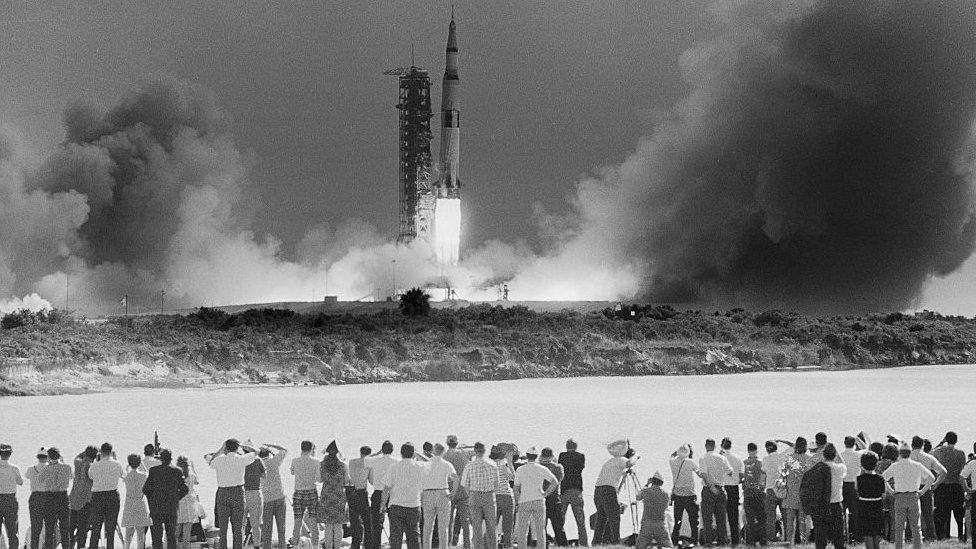
This picture shows the Saturn 5 rocket launching
The Apollo 11 mission had three spacecraft: the Command Module Columbia, a Service Module and the Lunar Module Eagle.
It took four days, six hours and 45 minutes to get to the Moon.
The lunar module landed on the Moon at 8:17pm on 20 July 1969.
Houston, Tranquillity Base here. The Eagle has landed
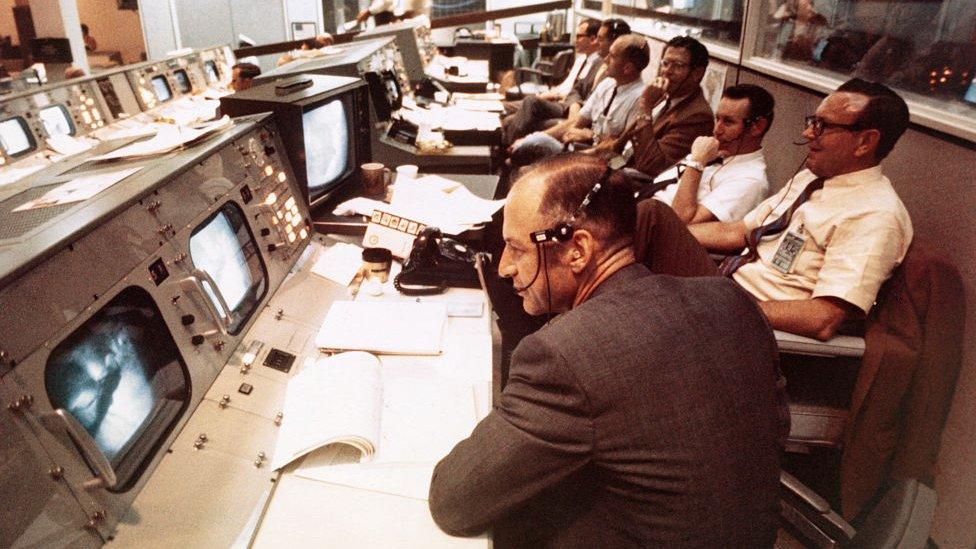
This pciture shows Mission Control for the Apollo 11 mission
While astronauts Armstrong and Aldrin descended to the Moon in the Eagle module, Michael Collins remained alone in Columbia. For 28 hours, he served as a communications link and photographed the lunar surface.
When did Apollo 11 return to Earth?
By the time the crew landed back on Earth, on July 24 1969, the mission had taken 8 days, 3 hours, 18 minutes and 35 seconds.
Sadly, Mr Kennedy never got to see his dream come true as he was killed in 1963.
In the end, it was President Nixon who made the first telephone call to the Moon and the longest distance phone call (some 240,000 miles) ever made.
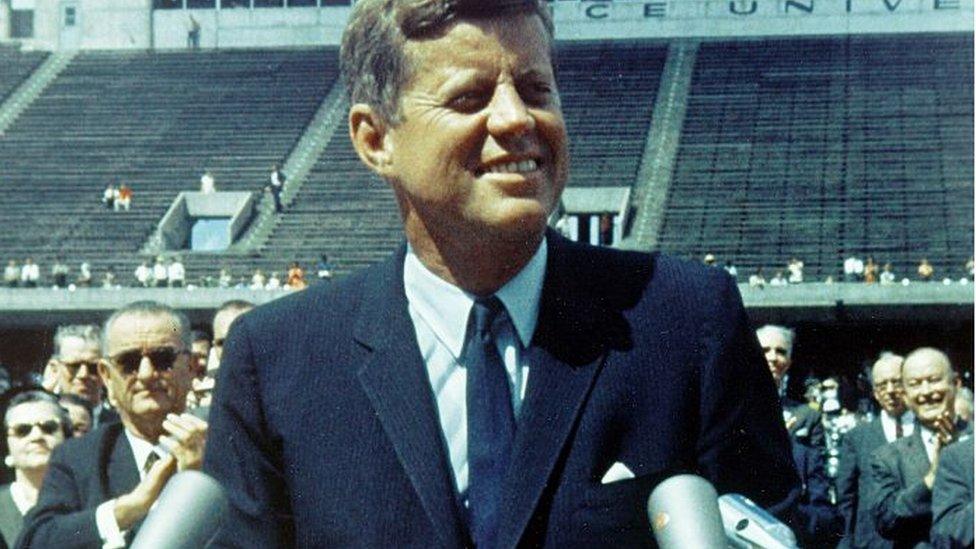
John F Kennedy set a goal for the USA to get to the Moon by the end of the decade
What did the Apollo 11 astronauts do on the Moon?
While many say a big part of the lunar landing was technological superiority in the space race, there were other reasons it was such an important mission.
These including establishing the technology to do it in the first place (which could have other uses), carrying out scientific exploration of the Moon, and developing human capability to work in a lunar environment.
The astronauts carried out important experiments while on the surface, and they picked up bits of Moon dirt and rocks to bring back to Earth to be studied.
They also left behind an American flag, a patch honouring the fallen Apollo 1 crew and a plaque on one of the Eagle's legs.
It reads: "Here men from the planet Earth first set foot upon the moon. July 1969 A.D. We came in peace for all mankind."
Where were the women during the Apollo Moon landing?
Looking at the coverage of Apollo, you might think that it is just white men who made the Apollo 11 mission a reality.
The astronauts were all men, the mission controllers were all men and even the TV anchors were male.
But there were thousands of women supporting the mission.
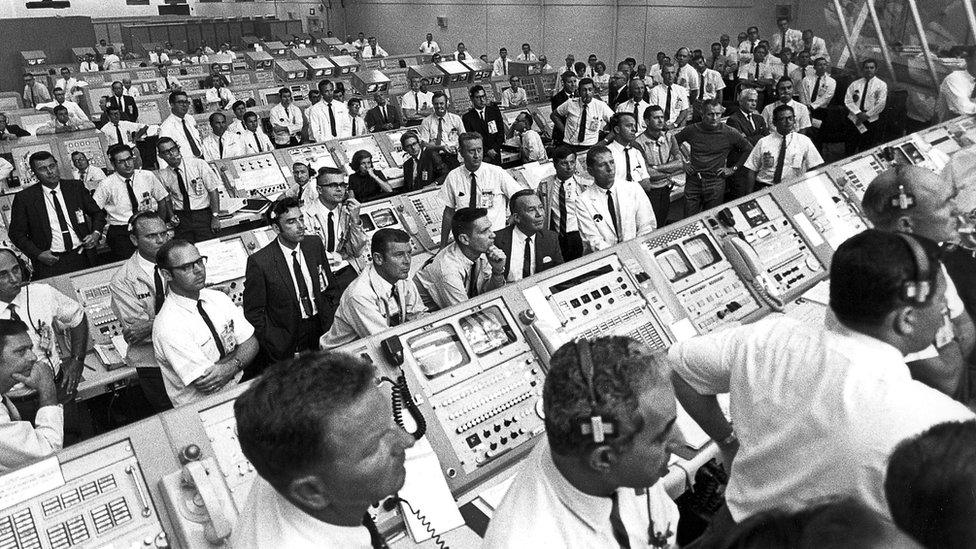
Can you spot the one woman in this room?
Which women were involved in the Apollo Moon landing?
Instrumentation controller JoAnn Morgan was the only woman in Apollo 11 launch control at Cape Canaveral. As an engineer, she was responsible for 21 channels of communications, as well as the health and welfare of all the monitoring systems for the Saturn 5 rocket, which launched the astronauts into space.
Mathematician Katherine Johnson was also part of Nasa and helped to calculate the trajectory for the 1969 Apollo 11. She was one of a group of female African-Americans who worked at Nasa and whose amazing story is told in the film Hidden Figures.
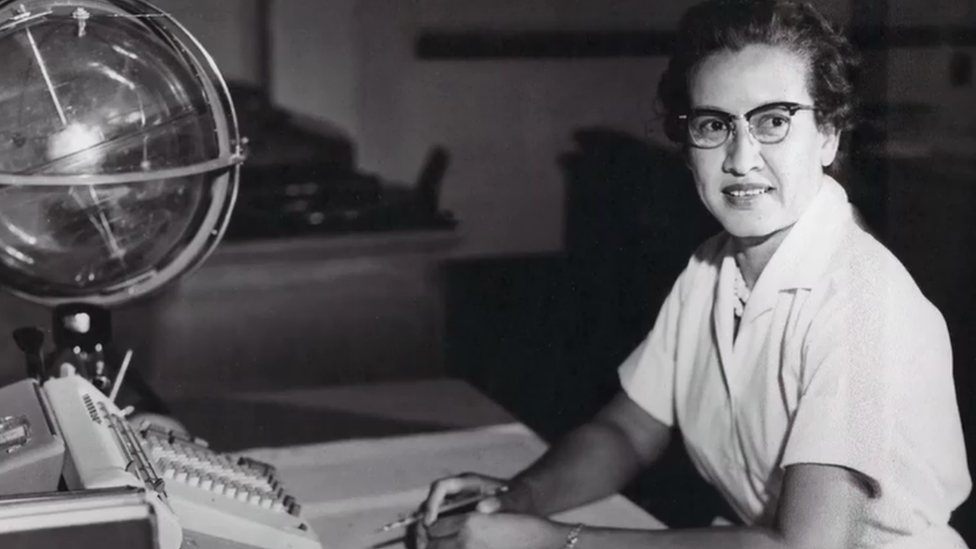
Katherine Johnson helped to calculate the trajectory for Apollo 11
What other Moon missions have there been?
The US would go on to complete six crewed missions to the Moon, which landed a total of 12 astronauts (all men) on its surface.
The Apollo missions, as they were called, all took place from 1969 to 1972 - from Apollo 11 right up to Apollo 17.
All of the missions successfully landed astronauts on the Moon apart from Apollo 13, which was supposed to go to the Moon, but had technical problems.
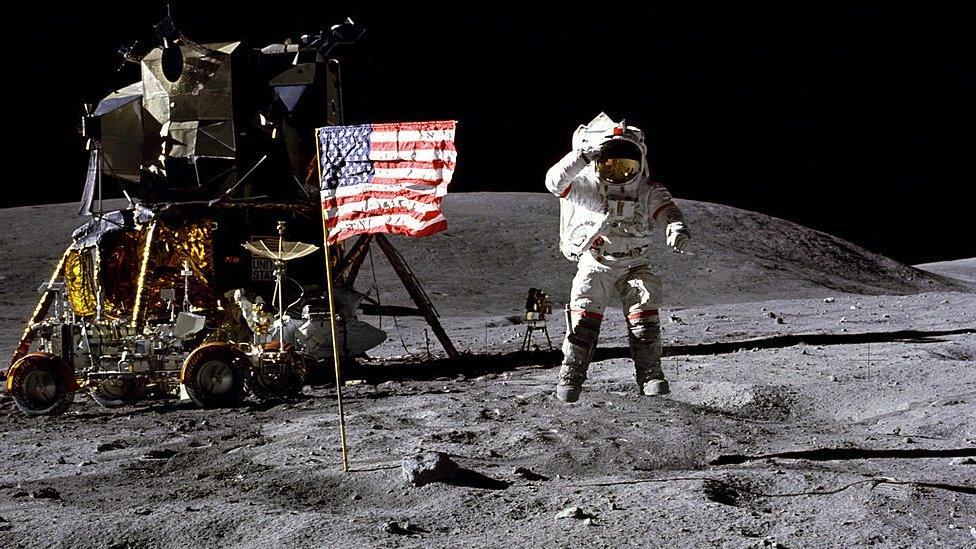
Astronaut John Young walks on the surface of the Moon
A total of 12 people have walked on the Moon - Neil Armstrong, Buzz Aldrin, Pete Conrad, Alan Bean, Alan Shepard, Edgar Mitchell, David Scott, James Irwin, John Young, Charles Duke, Eugene Cernan and Harrison Schmitt.
The last people walked on the Moon in 1972.
Since then, lots of countries have landed probes on the Moon, but none with people aboard.
- Published16 July 2019
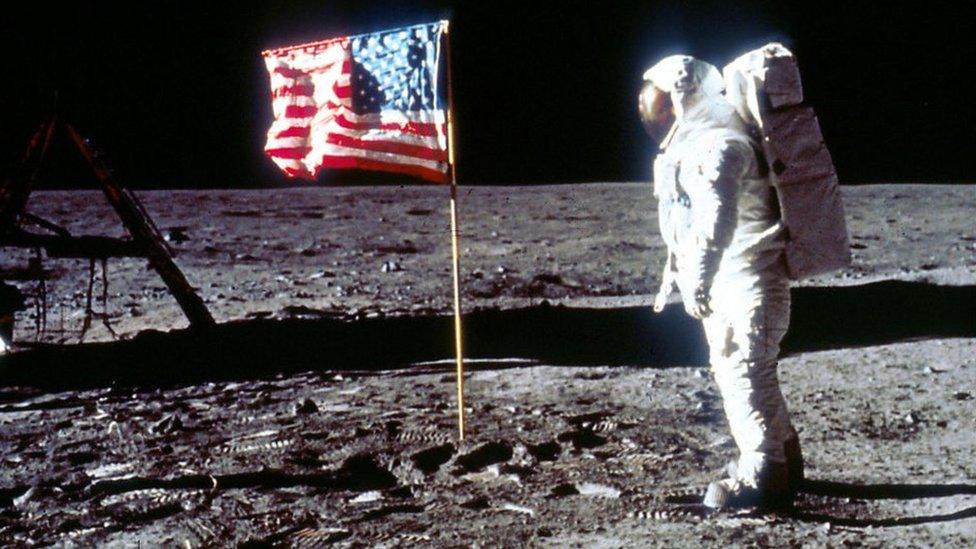
- Published14 April 2019
- Published10 August 2023
